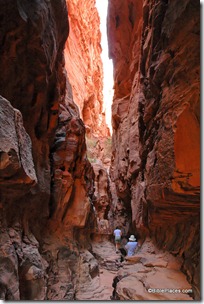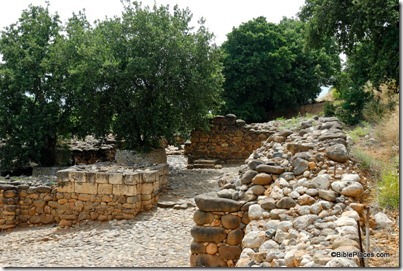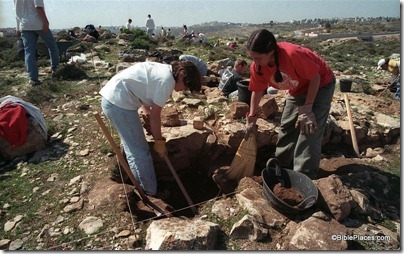What do you do after you’ve learned the historical geography of Israel? Recognize that the other half of the biblical story is on the east side of the Jordan River and plan to learn that.
The best way I know how to do that is through the Historical Geography of the Bible II course offered by the University of the Holy Land. I’ve participated in this study trip taught by Dr. Ginger Caessens and I highly recommend it. You simply cannot find another trip where you will learn and see more about biblical history in Jordan.
The class runs from July 2 to 16, 2012, and the cost is $2200 for full board, double occupancy (single supplement is $376). This includes two hours of credit but does not include airfare to Tel Aviv or transport from the airport to Jerusalem.
ITINERARY FOR HISTORICAL GEOGRAPHY OF THE BIBLE II (JORDAN):
Monday, July 2, Transfer from Israel to Jordan via Allenby Bridge; traditional baptismal site (Bethany-Beyond-Jordan?). Overnight in Amman. (Special arrangements can be made for those who
wish to join the group in Jordan rather than in Israel.)
Tuesday, July 3, Lectures. Overnight in Amman.
Wednesday, July 4, The Land of Ammon Field Trip: Amman Citadel (Rabbath-Ammon) and National Museum; remains of Philadelphia (Theater, Odeon); Rujm al-Malfouf (Ammonite tower);
Tall al-`Umayri; Kh. es-Sar; Iraq al-`Amir. Overnight in Amman.
Thursday, July 5, Upper Gilead Field Trip: Tall adh-Damiyya/ ancient Adam (view from road); Tulul adh-Dhahab (Mahanaim?); Tall Dayr `Alla (Penuel?); Ajlun Castle; Mar Elias, Listeb, and Umm al-Hedamus (Tishbeh?, home of Elijah). Overnight in Olive Branch Hotel near Jerash.
Friday, July 6, Lower Gilead Field Trip: view of Tall al-Maqlub (Jabesh-gilead?) from the village of Judeita; Tabaqat Fahel (Pella); Umm Qeiss (Gadara); Beit Ras (Capitolias); Tall ar-Rumeith (Ramothgilead?). Overnight in Olive Branch Hotel near Jerash.
Saturday, July 7, Jerash (Gerasa). Overnight in Amman.

Gerasa from south
Sunday, July 8, Free day. Overnight in Amman.
Monday, July 9, Quiz and Lectures. Overnight in Amman.
Tuesday, July 10, Medeba Plateau Field Trip: Tall Hisban (Heshbon); Kh. al-Mukhayyat (ancient village of Nebo); Mt. Nebo; Madaba Mosaic Map; Kh. `Attarus (Ataroth); Mukhawir (Machaerus);
Tall Araʼir (Aroer); Tall Dhiban (Dibon); W. Mujib/Arnon River Gorge. Overnight in Kerak.
Wednesday, July 11, Moab and Edom Field Trip: Kerak Castle; Sela (climb); Buseira (Bozra); view of W. Danna; `Udruh (Roman Fort). Overnight in Wadi Musa.
Thursday, July 12, Little Petra (Siq al-Barid); Petra. Overnight in Wadi Musa.
Friday, July 13, Caravan Routes East and South of Petra: Humayma (ancient caravan stop); Wadi Ram (2-hour jeep ride  followed by traditional meal in Bedouin tent); Wadi Yitm. Overnight in Aqaba.
followed by traditional meal in Bedouin tent); Wadi Yitm. Overnight in Aqaba.
Saturday, July 14, Wadi Arabah Field Trip: ancient Copper Mines at Feinan (Punon?); Kh. en-Nahash; Sanctuary of St. Lot/Deir `Ain Abata; Bab adh-Dhra (view from road); Hot springs of Kallirhoe. Overnight in Madaba.
Sunday, July 15, Exam. Overnight in Madaba.
Monday, July 16, Return to Jerusalem; program ends.
Jebel Khazali in Wadi Rum




